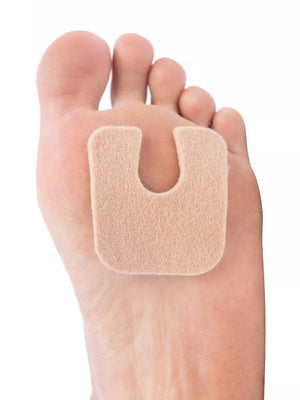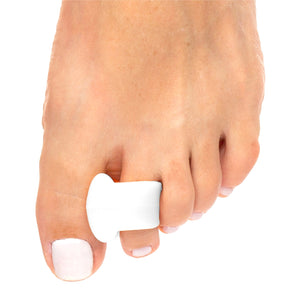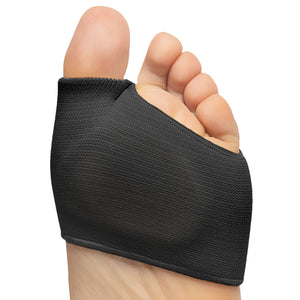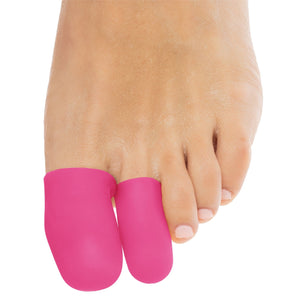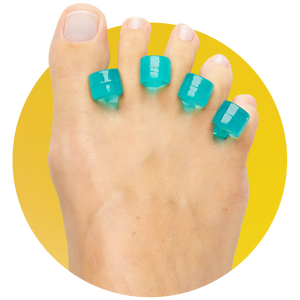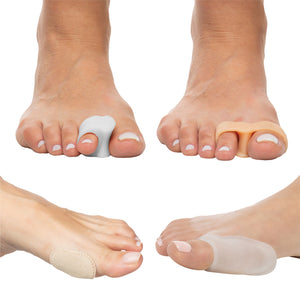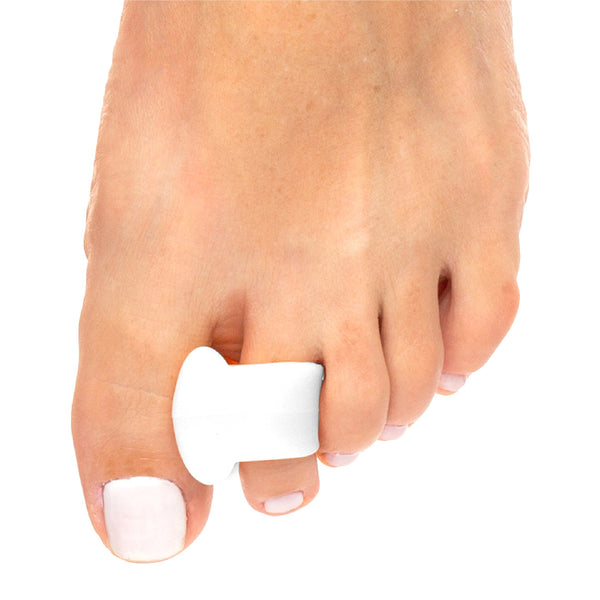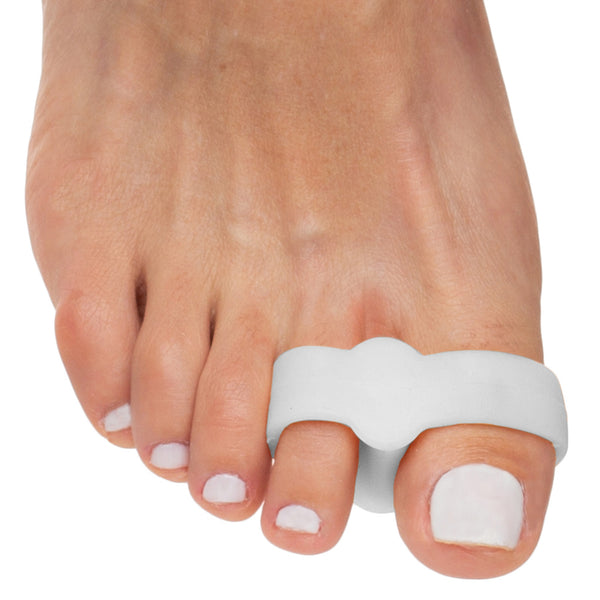BUNIONS
Bunions
Bunions are a very common foot care problem which become more likely with age. They are believed to affect 38 percent of all women and 21 percent of men (source). While the condition can be very painful, a bunion’s symptoms can often be managed.
What Is a Bunion?
A bunion appears as a bump positioned on the side of one of the two big toes. Called hallux valgus by doctors, a bunion is a bulge in the bone that pushes outward and causes the big toe to become misaligned so that it is pointing toward the second toe rather than straight up and down.
Bunions do not develop overnight. Usually, they start with the big toe slightly curving inwards. The bump gradually appears and becomes larger in size over time.
Causes of Bunions
Research has shown that people with certain inherited foot shapes are more likely to develop bunions than others. In these individuals, the natural bone structure causes pressure to be unevenly distributed over the foot, putting stress on the metatarsophalangeal joint, where the big toe meets the foot.
Foot injuries can also cause the toe to become repositioned, resulting in the formation of a bunion. In the past, some doctors held that wearing tight, narrow shoes caused bunions. Now, footwear is believed to exacerbate bunions in people prone to developing them due to the shape of their feet rather than being a direct cause of the problem.
Symptoms of Bunions
Some people never develop symptoms beyond a bump at the side of the big toe and misalignment; however, others may experience pain or soreness along the bump, redness and swelling, burning sensations, numbness or reduced feeling. People who suffer from bunions may also develop corns or calluses in between their first and second toes due to the misalignment. The foot misalignment caused by a bunion can also lead to pain in the foot arch, heel, ankle, knee, and hips.
Symptoms are most likely to occur due to pressure caused by footwear, making the pain and discomfort associated with bunions more common in women who wear high heels.
How Bunions Are Diagnosed
Doctors can typically diagnose a bunion just by looking at the foot. Once a bunion is spotted, X-rays are usually performed to determine how severe the changes to the bone are.
Treating Bunions
A bunion will not go away on its own, and it is likely to worsen over time, although the speed at which a bunion changes varies from person to person. Doctors often start treatment with nonsurgical interventions, including:
- Wearing shoes with wider and deeper toe boxes and heels less than 2 inches high
- Using pads and cushions to cover the bunion and protect it from friction
- Reducing physical activity to rest the feet
- Non-steroidal anti-inflammatory medications like aspirin, ibuprofen and naproxen may be used to address swelling and pain
- Using ice packs for cold therapy several times per day can reduce inflammation
- Corticosteroid injection treatments, which reduce swelling of the sacs around the toe joint, seem to help a small number of people with bunions
- Custom orthotics and toe separators can be worn with or without shoes to promote proper toe alignment
- Physical therapy can help to ease inflammation and restore flexibility
- Ultrasound therapy has been shown to reduce inflammation in soft tissue
When nonsurgical interventions fail to produce results and the discomfort caused by bunions start to make daily activities difficult, doctors may consider surgical treatment. There are a number of ways to operate on bunions from repositioning the toe to removing excess bone and soft tissue. The surgical plan is developed by a foot and ankle surgeon using information from X-rays and a patient's background history.


